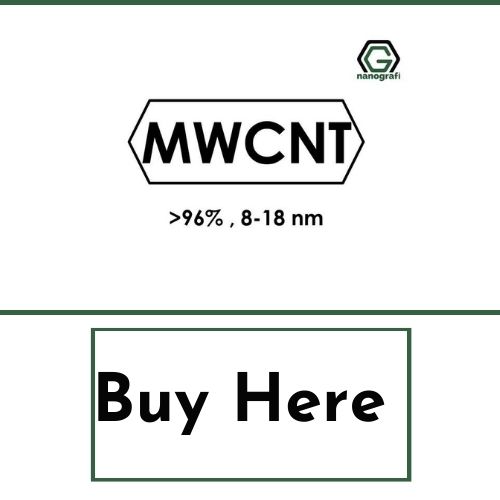Nanotechnology and Nanomaterials for Camouflage and Stealth Applications
Camouflage and stealth are a big part of the military industry and get more challenging as the surveillance technologies improve rapidly. Nanotechnology and nanomaterials are suggested as promising approaches for the development of camouflage and stealth technologies.
Nanomaterials are utilized as RAMs while nanotechnology is utilized to develop invisibility cloaks which would carry the camouflage game one step further.
Introduction
Military strength has always been one of the most important subjects in every country. It is measured by the manpower; the accuracy and effectiveness of firepower; the detection and surveillance capabilities; the ability to protect the manpower and equipment and the protection against surveillance. Surveillance protection is commonly known as camouflage which refers to avoidance or delay of detection of troops, weapons or strategic locations, installations in your own territory. On the other hand, stealth refers to an unnoticed entry in an enemy’s territory. However, both of these situations are based on concealing a moving target. Before World War II, camouflage and stealth applications had been restricted to visibly concealing the target since the main detection techniques were based on the naked human eye or at the most aided with some kind of telescopic glasses. However, after World War II surveillance techniques have evolved and reached beyond the visible range. Sensors working at different ranges of the electromagnetic spectrum such as ultraviolet (UV), infrared (IR), and microwaves as well as acoustic waves have pushed scientists to come up with innovative camouflage and stealth techniques. The development of sensors and surveillance equipment at different ranges requires camouflage and stealth applications at multiple ranges simultaneously. Accomplishing this complex task is tedious and cumbersome at larger scales. Hence, scientists have turned to nanotechnology for satisfying answers to this problem. The multispectral response and tunable characteristics of nanomaterials offer flexible and effective solutions. The high surface to volume ratio of nanomaterials can provide selective absorption, reflection, or transmission of electromagnetic radiation (optical, infrared, or microwave) properties as well as enhanced mechanical characteristics such as superplasticity, high structural strength and toughness; enhanced chromogenity; colorfastness in pigments, and so on. Besides nanomaterials, nano engineered structures or metamaterials are also utilized for multispectral camouflage and stealth applications. Metamaterials can be described as engineered materials showing properties that do not naturally occur in those materials.
Nanomaterials for Multispectral Camouflage and Stealth Applications
Nanomaterials are usually utilized as radar absorbing materials (RAMs) in coatings and structures for camouflaged and stealth applications. Microwave radiations emitted by radar are captured and dissipated by radar-absorbing materials. Several different materials including dielectric, conductive, and magnetic materials are studied for their radar absorbing properties. Conductive materials reflect, dielectric materials will transmit, and magnetic materials due to hysteresis absorb incident radar waves. Nanomaterials absorb more strongly over broader frequencies as compared to their bulk counterparts. The most commonly utilized nanomaterials in radar absorbing applications are nanocrystal RAMs, core-shell nanocomposite RAMs, nanocomposites of nanostructured carbon RAMs, and thin metallic films.
Crystalline nanomaterials show great radar absorbing properties due to enhanced surface area and increased number of dangling bonds at the surface. These properties increase interface polarization and multiple scattering, thus leading to strong absorption of microwave radiation. An example of these materials is nanostructured LaBaMnO3 crystals that show a wide range (2–18 GHz) of microwave-absorbing properties. Important factors affecting the radar absorbing properties of nanocrystals are morphology and grain size
Core-shell nanocomposite structures have gained importance due to their tunable properties. The combination of different materials and changes in the design parameters allows the manipulation of nanocomposite properties. For enhanced absorption efficiencies, magnetic core and dielectric shell combinations or the other way around are considered as promising nanocomposites. The most studied examples of such structures are hexagonal nano ferrite, BaNi00.4Ti00.4Fe11.2O19, core coated with Ni-P shell; MnFe2O4 spinal nano-coated with nano TiO2; carbon fibers covered with cupric oxide; and FeCo alloy with a carbon-coated shell.
Carbon nanomaterials such as carbon nanotubes (CNTs) and graphene have been the center of studies due to their unique properties. The composites of carbon nanomaterials with metal oxides or polymer matrices have especially attracted attention in radar absorbing applications because of their electrical conductivity, high mechanical strength with thermal stability, and tunable microwave absorption characteristics in a broad frequency range. CNTs also offer corrosion resistance while metal filled CNTs offer additional EMI shielding effect. On the other hand, graphene provides chemical inertness. Both of these options have been studied in detail for radar absorbing coatings.
Metallic thin films show microwave absorbing properties even though bulk metallic materials exhibit good reflective properties. Metallic thin films are commonly obtained by deposition on polymeric substrates. On the metallic thin films, electric dipoles are formed which interact with electromagnetic waves leading to their absorption due to polarization. One of the most important factors in metallic thin films is the film thickness since it affects the absorption characteristics.
Radar absorbing structures (RAS) are special engineered structures involving radar observing materials (RAMs) and fiber reinforced polymers (FRPs). Fiber reinforced polymer composites made from glass or carbon fibers reinforced in thermoset polymers or thermoplastic matrices have become one of the most popular materials in aviation and military industries. These polymers are utilized to replace conventional expensive and high density materials. Radar absorbing structures are obtained by either coating RAMs onto FRPs or by impregnating RAMs into FRP structures. In addition to radar absorbing properties, RAS offer aerodynamic advantages and mechanical strength. These structures also reduce the radar cross-section of aircraft, naval ships, and missiles suppressing the radiations emitted by electronic equipment. Hence radar absorbing structures have recently attracted a lot of attention.
To get more information about the applications of carbon nanotubes,
you can read our blog post here.
Nanotechnology/Metamaterials for Multispectral Camouflage and Stealth Applications
Manipulating the emitted or reflected electromagnetic radiation from the surface of a moving object is a challenging task. The conventional camouflage and stealth applications through surface modifications are only successful at a particular range of the spectrum. Recently, metamaterials are suggested as a possible solution to this problem. Metamaterials are engineered materials that are composed of meta atoms showing extraordinary properties. Precise shape, geometry, size, orientation, and arrangement of meta-atoms are responsible for the unique properties of metamaterials including negative refractive index. These properties of metamaterials are utilized in the development of invisibility cloaks working at visible, infrared, and microwave ranges. For infrared and microwave invisibility cloaks, metasurfaces composed of meta atoms coated on a surface are considered as suitable structures. Metasurfaces can be manipulated as frequency selective and thus useful in designing microwave and infrared stealth structures simultaneously. Furthermore, hybrid metasurfaces (HMS) incorporating dielectric medium and metal layers provide a great reduction in microwave reflection in the broadband range and low infrared emissivity values. Metamaterials can also be utilized as optical cloaks bending the light for all visible colors. This technology can make huge objects invisible to the human eye. A study has shown that invisibility cloak can be obtained by using a thin film of magnesium fluoride topped by small gold antennae. This metamaterial bends light and creates an illusion by matching the background. However, optical cloaking applications are still in their infancy and require fuehrer development for practical applications. In addition to optical invisibility cloaks, metamaterials are also utilized to develop thermal invisibility cloaks based on the scattering cancelation approach.
Conclusions
Camouflage and stealth are some of the most important applications in the military industry. Enhancing these applications allows better avoidance of enemy surveillance and unnoticed entry to the enemy’s territory. As the surveillance technologies and sensors have developed over the years, better camouflage and stealth technologies have to be developed in accordance. Developed technologies allow surveillance at a wide range of electromagnetic spectra including UV, IR, and microwave. However, conventional camouflage and stealth technologies fail to avoid all of these sensors simultaneously. The answer to this problem was found in nanotechnology. Nanomaterials such as nanocrystals, carbon based nanomaterials, core-shell nanocomposites, and metallic thin films are utilized to develop radar absorbing material coatings. On the other hand, the incorporation of radar absorbing materials and fiber reinforced polymers leads to radar observing structures. These structures offer aerodynamic advantages and mechanical strength in addition to radar absorbing properties. Another exciting camouflage and stealth application based on nanotechnology are optical and IR/microwave invisibility cloaks. Optical invisibility cloaks are designed with the use of metamaterials which bend light around an object and create an illusion by matching the background making it invisible to the naked eye. IR and microwave invisibility cloaks utilize metasurfaces obtained by coating meta atoms onto the target's surface. Metasurfaces offer frequency selectivity, microwave reflection in the broadband range, and low infrared emissivity values. The invisibility studies with metasurfaces and metamaterials are still under development to fit practical applications and other nanotechnology based camouflage and stealth applications still require further improvements.
To get more information, you can visit Blografi.
References
1.Sharon, M., Rodriguez, S. A. L., & Sharon, C. (2019). Nanotechnology in the defense industry. Wiley-Scrivener.
2.Monti, A., Alù, A., Toscano, A., & Bilotti, F. (2015). Optical invisibility through metasurfaces made of plasmonic nanoparticles. Journal of Applied Physics, 117(12), 123103.
3.Zhang, Y., Xu, H., & Zhang, B. (2015). Design, implementation, and extension of thermal invisibility cloaks. AIP Advances, 5(5), 053402.
4.Kumar, N., & Dixit, A. (2019). Nanotechnology for Defence Applications. Cham: Springer International Publishing.
Recent Posts
-
Advanced Materials for Unmanned Aerial Vehicle (UAV) Protection Against Laser
Consider a UAV on a critical mission, rendered inoperative by a sudden laser attack. With the increa …26th Jul 2024 -
Simulation and Modeling of Material Properties
Our world is composed of a dazzling array of materials, each with its own unique properties that dic …19th Jul 2024 -
Advanced Coatings for Superior Corrosion and Wear Resistance
Corrosion and wear pose significant challenges across various industries, leading to substantial eco …12th Jul 2024







